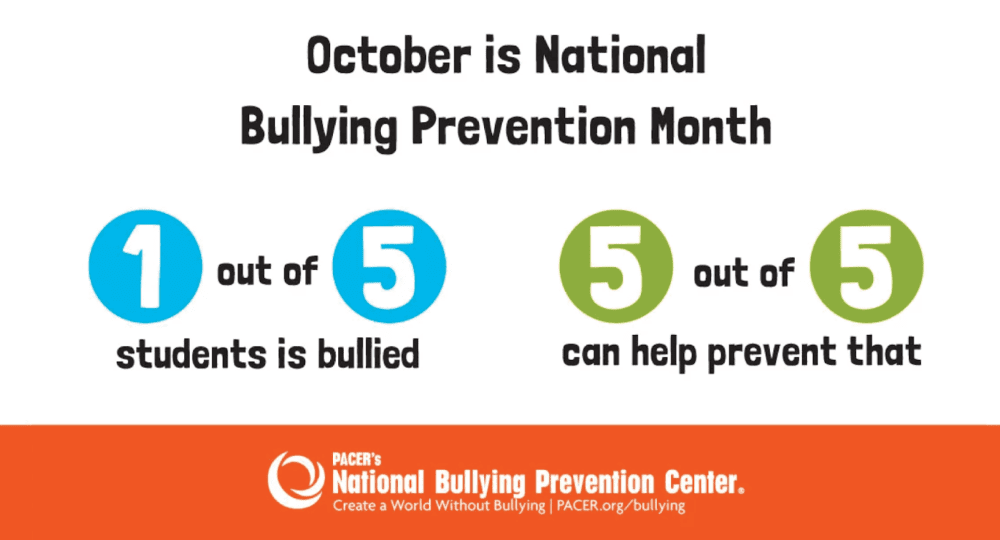Bullying can happen anywhere. It affects most of our kids, whether they are victims, perpetrators or witnesses. The US Department of Health and Human Resources defines bullying as “unwanted, aggressive behavior among school-aged children that involves a real or perceived power imbalance.” This behavior is repeated, or has the potential to be repeated, over time. 1 out of every 5 students between the ages of 12 and 18 reports being bullied.
There are three main types of bullying:
- Verbal bullying- saying or writing mean things (e.g. teasing, name-calling, inappropriate sexual comments, threatening to cause harm)
- Social bullying- hurting someone’s reputation or relationships (e.g. leaving someone out on purpose, spreading rumors about someone, embarrassing someone in public)
- Physical bullying- hurting a person’s body or possessions (e.g. hitting, kicking, spitting, choking, taking or breaking someone’s things)
Not only do kids today have to deal with bullying in schools, on the playground, riding the bus, and in their neighborhoods, but bullying can also happen electronically. This kind of bullying, called cyberbullying, can occur through text messaging, email, social media, apps or gaming where people can share content. It involves sharing negative, harmful, false, or mean content about someone else.
Cyberbullying is harder to recognize than other forms of bullying. It is also more difficult for children to find relief from, as digital devices offer around-the-clock access to others. Information shared in this way is often public and permanent, as it can be impossible to completely erase whatever was shared.
Those who bully and those who are bullied may suffer from serious problems, which can last into adulthood. Children who are bullied are more likely to experience:
- Depression and anxiety
- Increased feelings of sadness and loneliness
- Changes in sleep and eating patterns
- Loss of interest in things they used to enjoy
These issues may also lead to decreased academic achievement and school participation.
Kids who bully others are more likely to:
- Abuse alcohol and other drugs in adolescence and adulthood
- Get into fights and vandalize property
- Engage in early sexual activity
- Have criminal convictions and traffic citations as adults
- Be abusive towards their romantic partners, spouses or children as adults
So, what can we do about bullying?
Take steps to try to prevent it from occurring in the first place. Encourage your kids to take part in activities or hobbies they enjoy, which will also give them a chance to meet others with the same interests. This fosters confidence and friendship-building, which makes them less likely to become involved in bullying.
Keep open communication with your kids. Spend time daily talking to them about their lives. Also, talk with them directly about bullying. Make sure your kids understand what it is so they can better recognize it. Help them know and practice how to respond to a bully. This can include responses like looking the bully in the eye, staying calm, walking away, and saying things like “I don’t like what you are doing” and “Please do not talk to me like that.” Encourage them to speak to a trusted adult if they are bullied or they see it happening. Also, talk to your kids about how to help and show kindness toward other kids who are bullied.
If you think your child may be bullying others it is important to take it very seriously, as now is the time when you can try to change your child’s behavior before it turns into a lifelong problem.
- Set limits for your child’s aggressive behavior
- Use effective discipline such as loss of privileges
- Help them understand how bullying hurts others
- Show them ways to get what they want without hurting others
When bullying happens, know where to get help when you need it. The US Department of Health and Human Resources has compiled a great list of resources when someone is in immediate danger or when you have been unable to resolve a bullying-related situation on your own.
Resources:





